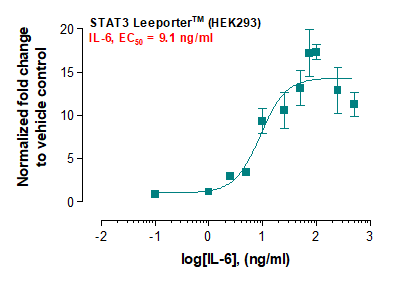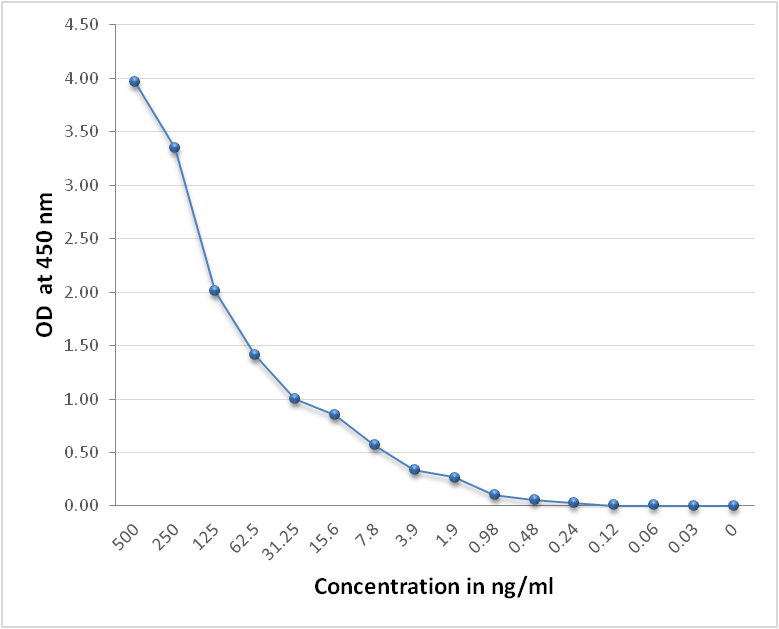Recombinant Human Carboxypeptidase E/CPE (C-6His)
Shipping Info:
For estimated delivery dates, please contact us at [email protected]
| Amount : | 50 µg |
| Content : | Supplied as a 0.2 µm filtered solution of 20mM TrisHCl,150mM NaCl,1mM ZnCl2,10%Glycerol,pH7.5. |
| Storage condition : | Store at -20°C, stable for 6 months after receipt. Please minimize freeze-thaw cycles. |
| AA sequence : | RLQQEDGISFEYHRYPELREALVSVWLQCTAISRIYTVGRSFEGRELLVIELSDNPGVHEPGEPEFKYIGNMHGNEAVGRELLIFLAQYLCNEYQKGNETIVNLIHSTRIHIMPSLNPDGFEKAASQPGELKDWFVGRSNAQGIDLNRNFPDLDRIVYVNEKEGGPNNHLLKNMKKIVDQNTKLAPETKAVIHWIMDIPFVLSANLHGGDLVANYPYDETRSGSAHEYSSSPDDAIFQSLARAYSSFNPAMSDPNRPPCRKNDDDSSFVDGTTNGGAWYSVPGGMQDFNYLSSNCFEITVELSCEKFPPEETLKTYWEDNKNSLISYLEQIHRGVKGFVRDLQGNPIANATISVEGIDHDVTSAKDGDYWRLLIPGNYKLTASAPGYLAITKKVAVPYSPAAGVDFELESFSVDHHHHHH |
Source: Human Cells.
MW :47.1kD.
Recombinant Human Carboxypeptidase E is produced by our Mammalian expression system and the target gene encoding Arg42-Ser453 is expressed with a 6His tag at the C-terminus. The active form of CPE cleaves C-terminal amino acid residues of the peptide, and is thus involved in the biosynthesis of peptide hormones and neurotransmitters including insulin, enkephalin, etc. It is thought that membrane-associated CPE acts as a sorting receptor for targeting regulated secretory proteins which are mostly prohormones and neuropeptides in the trans-Golgi network of the pituitary and in secretory granules into the secretory pathway. Defects in this protein are implicated in type II diabetes due to impaired glucose clearance and insulin resistance.
MW :47.1kD.
Recombinant Human Carboxypeptidase E is produced by our Mammalian expression system and the target gene encoding Arg42-Ser453 is expressed with a 6His tag at the C-terminus. The active form of CPE cleaves C-terminal amino acid residues of the peptide, and is thus involved in the biosynthesis of peptide hormones and neurotransmitters including insulin, enkephalin, etc. It is thought that membrane-associated CPE acts as a sorting receptor for targeting regulated secretory proteins which are mostly prohormones and neuropeptides in the trans-Golgi network of the pituitary and in secretory granules into the secretory pathway. Defects in this protein are implicated in type II diabetes due to impaired glucose clearance and insulin resistance.
Endotoxin : Less than 0.1 ng/µg (1 IEU/µg) as determined by LAL test.
For Research Use Only. Not for use in diagnostic/therapeutics procedures.
| Subcellular location: | Nucleus |
| Tissue Specificity: | Isoform 2, but not isoform 1, is overexpressed in hepatocellular carcinoma (at protein level), as well as in other tumors, including pheochromocytomas and paragangliomas. |
| BioGrid: | 107755. 27 interactions. |
|
There are currently no product reviews
|















.png)













